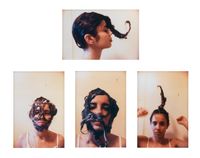Ana Mendieta was a Cuban-American artist known for her performance, sculpture, painting, and video practice that explored the relationship between the body and the landscape. She has been the subject of several documentary films including BloodWork: The Ana Mendieta Story (2009), which explores the controversial and mysterious circumstances of her death.
Read MoreMendieta was born in Havana, Cuba, in 1948. In 1961, Ana and her sister, Raquel, were sent to the United States by their father, who had engaged in counter-revolutionary activity and was confined for 18 years due to his involvement in the Bay of Pigs. Fleeing to the United States in Operation Peter Pan, which saw over 14,000 unaccompanied minors leave the country between 1960 and 1962, she arrived in the United States at the height of the civil rights movement. Ana and Raquel were sent to the American Midwest, eventually reuniting with their mother and younger brother, Ignacio, in 1966, with their father only being able to join the family in 1979.
In 1969, the artist received her BA from the University of Iowa, and her MA in painting in 1972, later changing to the university's experimental MFA programme, which exposed her to artists including Vito Acconci and Nam June Paik. These encounters would inform Ana Mendieta's art over the following decade, which encompassed elements of conceptual art that defined the 1970s including feminist practices, performance, and land art.
Ana Mendieta's artistic career, cut short by her premature death in 1985, produced a diverse body of works that were a fusion of sculpture land art and performance. Through diverse media she explored how human beings relate to our surroundings.
Death of a Chicken
Mendieta's early work includes Death of a Chicken (1972), referencing the obscenity of the world as she experienced it. Performed at the University of Iowa, the performance represented an early instance of Mendieta's use of blood as a medium.
A year later, Mendieta responded to the rape and murder of a fellow student in Rape Scene, which saw her conduct a private performance in which she posed in her apartment as the victim of a sexual assault. The artwork tackled themes of masculine aggression and the oppression of the female body—themes that are present in the subsequent Moffitt Building Piece (1973), which also referenced the crime.
In Moffitt Building Piece, Ana Mendieta's sister hid in a parking lot and filmed the doorway to the artist's Iowa City apartment, where she had placed blood and other ephemera outside the front door. In the film streams of people walk by, taking notice of the blood and moving on.
Siluetas
Ana Mendieta's films were shot primarily with a Bolex Super 8 camera. She shot nearly 100 videos between 1973 and 1981, using the format to document her works, including her famous 'Silueta' series (1973–1980). Mendieta's 'Siluetas' were staged in Iowa and Mexico, where, in her fascination for Central American and Caribbean religious iconography, she frequented pre-Columbian ruins.
Carving the shape of her body into the earth or assembling natural materials into her form, Mendieta's ephemeral creations live on through her films and photographs. Different bodily configurations signaled different symbolisms—for example, by raising her arms, Mendieta referenced the merging of earth and sky.
Ana Mendieta's 'earth-body' works, as she called them, took on more direct reference to ancient goddesses in 1978, when she carved their forms into rock, sand, or clay beds, including a series created in limestone grottos in Cuba, where she returned in 1981. Her sister would later made the film Whispering Cave (2018), as she attempted to trace these sculptures in Jaruco, Cuba.
Tree of Life
Of her 'Siluetas', Ana Mendieta's 'Tree of Life' series saw the artist pose—covered head to foot in mud—against trees. 'Tree of Life', along with other photographs and moving image works, drawings, sculptures, and notebooks featured in the artist's first United Kingdom retrospective at the Hayward Gallery in London in 2013, titled Traces.
Ana Mendieta has been the subject of several gallery and institutional solo exhibition and group exhibitions.
The artist's solo exhibitions include: Ochún, The Cleveland Museum of Art Cleveland (2020); Ana Mendieta: Earthbound, Middelheim Museum, Antwerp (2019); Covered in Time and History: The Films of Ana Mendieta, NSU Art Museum Fort Lauderdale, (2016); Ana Mendieta: Traces, Hayward Gallery, London (2013); Ana Mendieta: Earth Body, Sculpture And Performance 1972-1985, Hirshhorn Museum and Sculpture Garden, Washington D.C (2004); Ana Mendieta: A Retrospective, New Museum, New York (1987); Dialects of Isolation, A.I.R. Gallery (1980).
Her group exhibitions include: Some Day is Now: Women, Art & Social Change, New Britain Museum of American Art, New Britain CT (2020); Trio, Galerie Lelong & Co., Paris (2015); Latin American Artists of the Twentieth Century, Museum of Modern Art, New York (1993); Image Impact, MoMA PS1, New York (1983).
The Ana Mendieta Estate website can be found here and the Ana Mendieta Estate Instagram can be found here.
Ocula | 2022
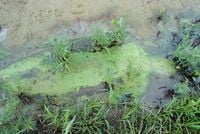
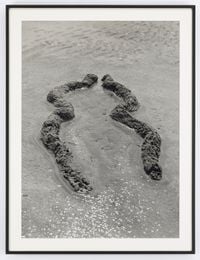

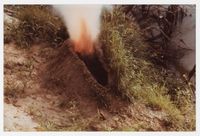
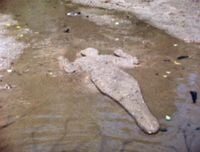
![Bacayu (Esculturas Rupestres) [Light of Day (Rupestrian Sculptures)] by Ana Mendieta contemporary artwork photography](https://files.ocula.com/anzax/37/37daa177-3202-4924-b5ac-41e49ac268ee_200_150.jpg)

